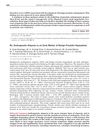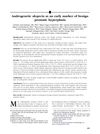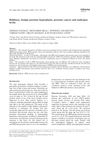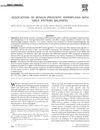Is There a Relationship Between Androgenic Alopecia and Benign Prostatic Hyperplasia?
January 2015
in “
DOAJ (DOAJ: Directory of Open Access Journals)
”

TLDR There's no link between hair loss type androgenic alopecia and benign prostatic hyperplasia, but early hair loss and family history can mean more severe alopecia.
In 2014, a cross-sectional study was conducted on 150 men over 50 years old to evaluate the relationship between androgenic alopecia (a type of hair loss) and benign prostatic hyperplasia (BPH), both of which are androgen-dependent processes influenced by the 5-alpha reductase enzyme. The study assessed the participants' urinary symptoms, PSA level, prostate volume, and alopecia grading using the Hamilton-Norwood classification. The results showed that 59.6% of men had mild alopecia, 34.1% had moderate alopecia, and 6.3% had severe alopecia. The mean PSA level was 1.37 ± 1.48 ng/ml, the mean prostate volume was 37.85 ± 21.85cc, and the mean international prostate symptom score (IPSS) was 7.6 ± 6.11. However, the study found no relationship between these parameters and androgenic alopecia. The occurrence of alopecia at a younger age and a positive family history were correlated with a higher grade of alopecia.






